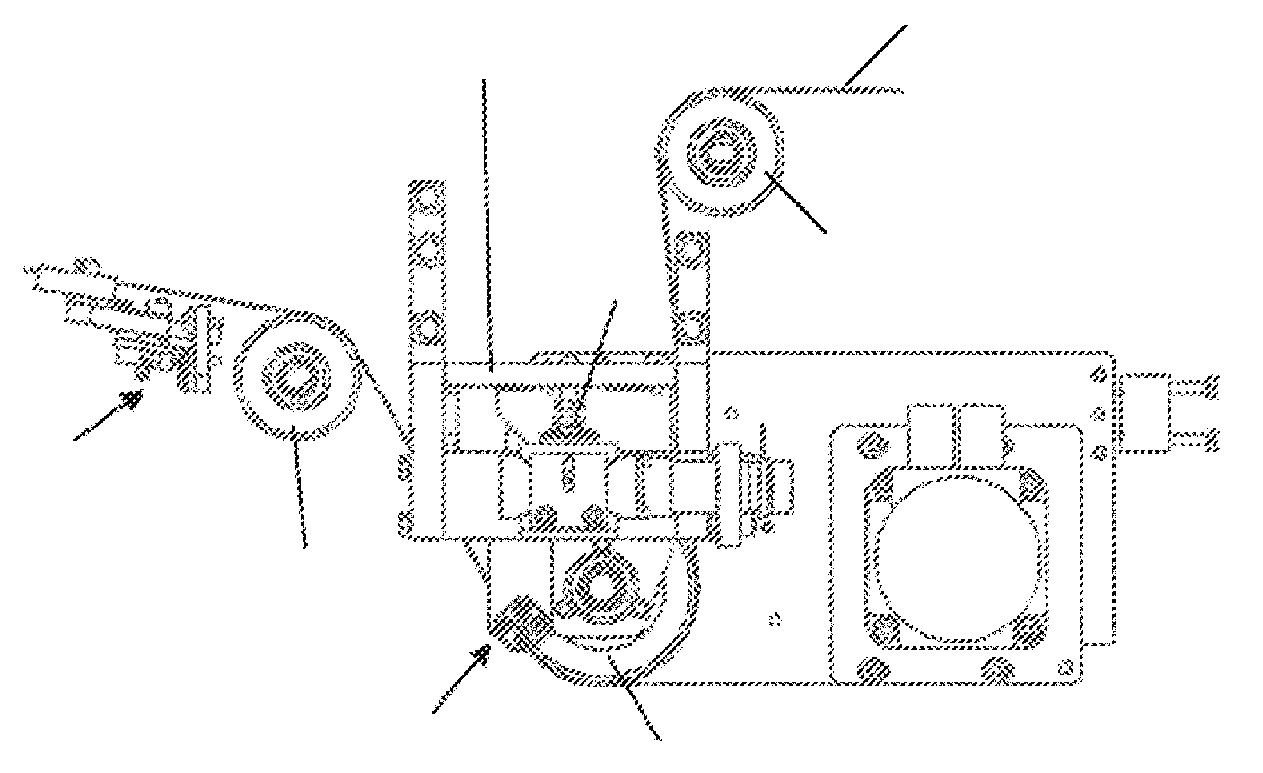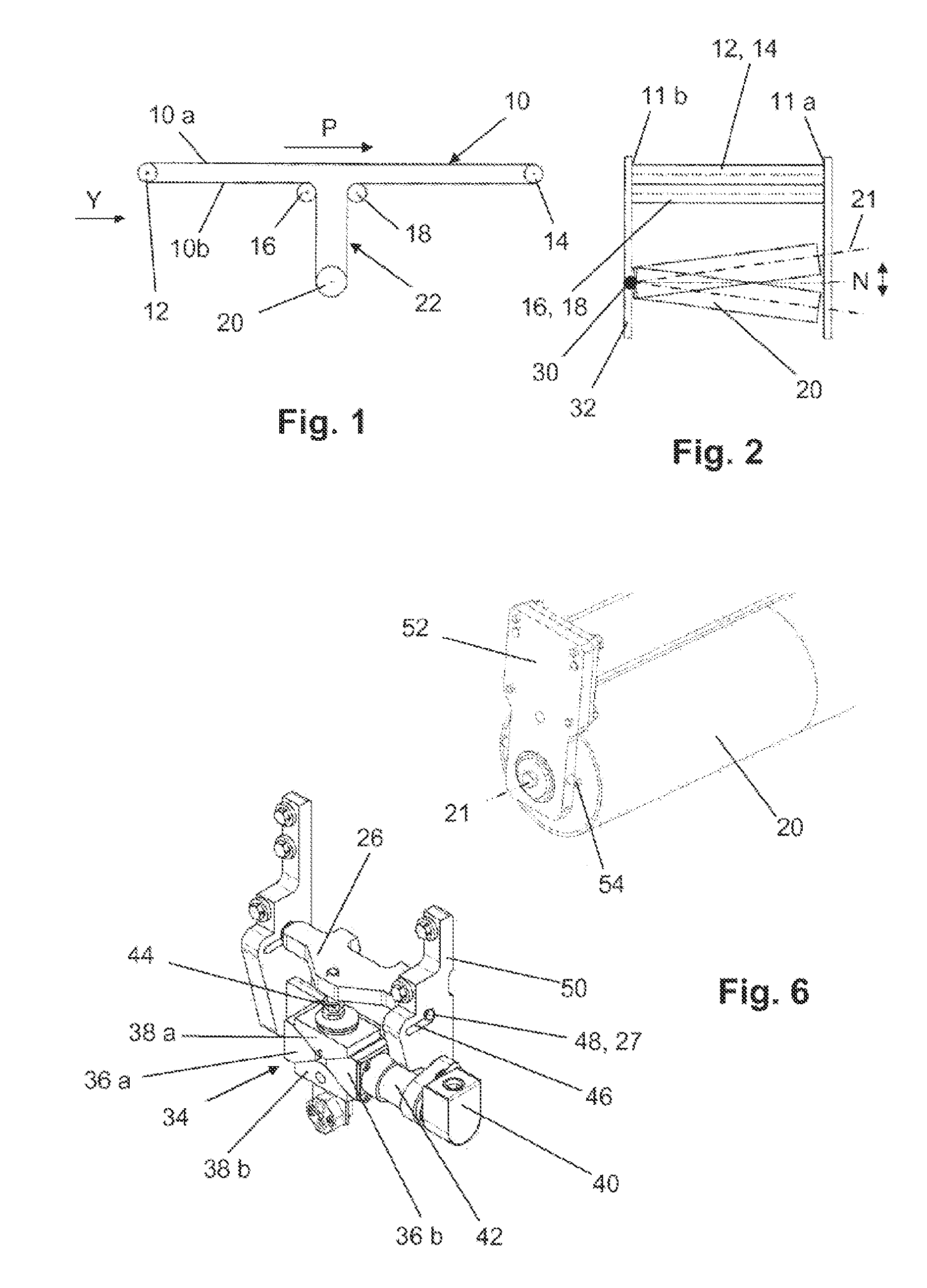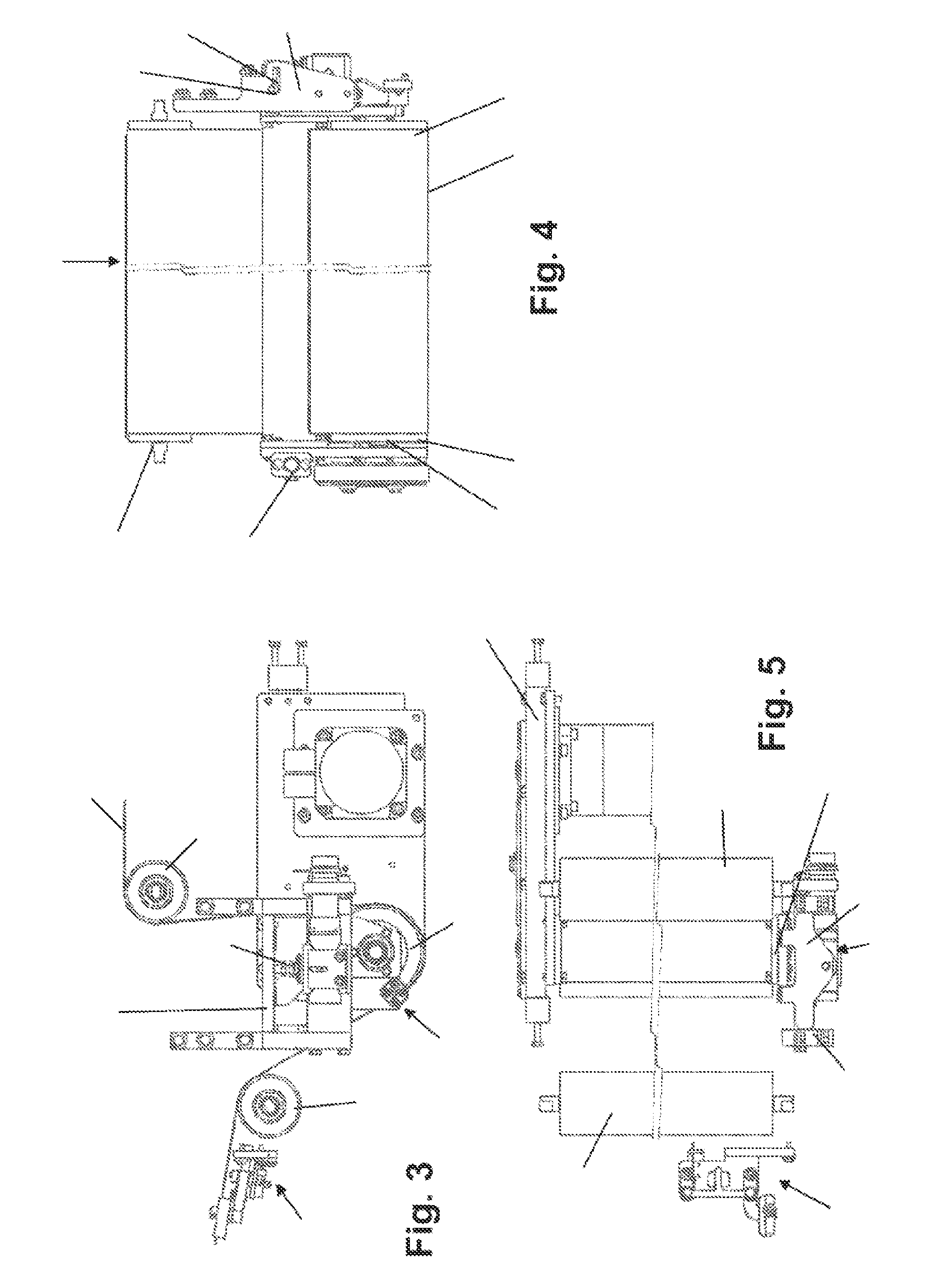Device for regulating the linear stability of a belt
a technology of linear stability and revolving belt, which is applied in the direction of rollers, conveyor parts, thin material handling, etc., can solve the problems of limited influence on the belt run, and inability to control the belt further, so as to ensure the linear stability of the belt, minimize the swinging movement of the belt, and ensure the effect of linear stability
- Summary
- Abstract
- Description
- Claims
- Application Information
AI Technical Summary
Benefits of technology
Problems solved by technology
Method used
Image
Examples
Embodiment Construction
[0021]FIG. 1 shows an endless transport belt 10 with a horizontally running transport strand 10A and return strand 10B which are arranged between a first and a second deflecting roller 12, 14. The return strand 10B is shaped via a third and a fourth deflecting roller 16, 18 into a belt loop 22 projecting essentially perpendicularly from the horizontal plane of the transport strand 10A and looping around a drive and control roller 20. The belt 10 runs as a transport strand 10A in the direction of the arrow P. The belt 10 is, for example, 1.5 m wide and has two belt edges 11 running parallel to one another. In order to regulate the linear stability of the belt 10, the axle 21 of the drive and control roller 20 can be pivoted up and down about its normal horizontal location N. For this purpose, the drive and control roller 20 is articulated at one end on a machine frame 32 via a pivot bearing 30. The other end can be raised and lowered via a lifting mechanism described in more detail f...
PUM
 Login to View More
Login to View More Abstract
Description
Claims
Application Information
 Login to View More
Login to View More - R&D
- Intellectual Property
- Life Sciences
- Materials
- Tech Scout
- Unparalleled Data Quality
- Higher Quality Content
- 60% Fewer Hallucinations
Browse by: Latest US Patents, China's latest patents, Technical Efficacy Thesaurus, Application Domain, Technology Topic, Popular Technical Reports.
© 2025 PatSnap. All rights reserved.Legal|Privacy policy|Modern Slavery Act Transparency Statement|Sitemap|About US| Contact US: help@patsnap.com



